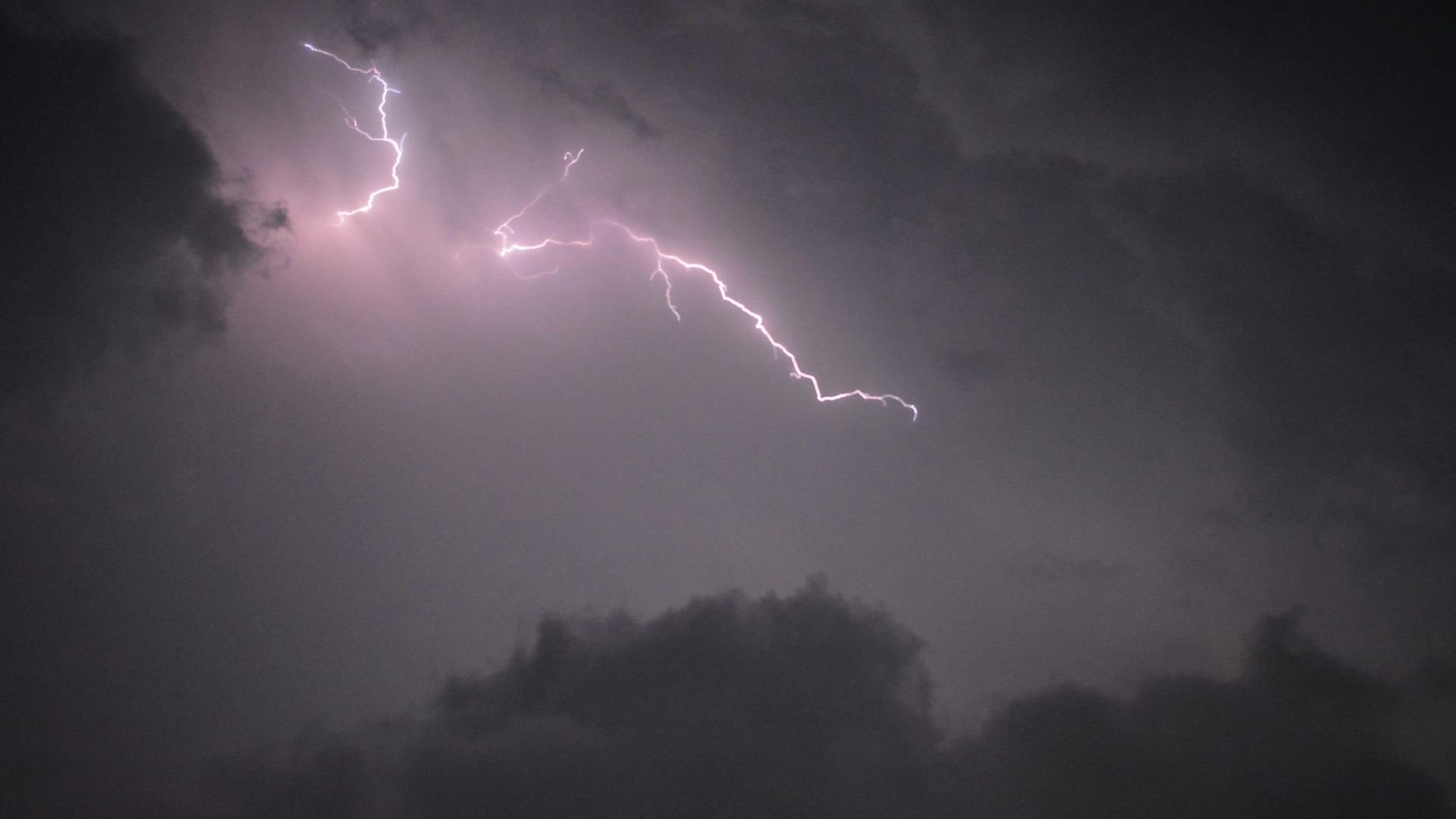World
The Critical Role of OpticSense in US Infrastructure

Economic growth in the United States relies on a vast networkof roads, bridges, water systems, railways, airports, high-speed internet access, and power grids. Much of this infrastructure has exceeded its intended lifespan, and the costs associated with upkeep are skyrocketing.
Among developed nations, the World Economic Forum rates the quality of US infrastructure as 13th. In fact, the American Society of Civil Engineers reveals that over 45,000 of the country’s bridges and 1 in 5 miles of its roads are in poor condition.
Fortunately, Huvr has introduced a cutting-edge means of monitoring infrastructure in real time. This comprehensive monitoring is designed to save money and keep people safe.
Why critical US infrastructure is failing
Much of the country’s infrastructure was built during the mid-20th century, and these structures are now reaching the end of their design lives. Along with the effects of natural aging, there has been a chronic underinvestment in infrastructure maintenance and upgrades. Public investment in the nation’s critical infrastructure has decreased by over 40 percent since the 1960s, and estimates suggest trillions of dollars are required to bring it up to acceptable standards.
The increasing frequency and severity of natural disasters — including hurricanes, floods, and wildfires — exacerbate the vulnerabilities of already fragile infrastructure. A quickly growing population also places additional stress on infrastructure systems that were not designed to handle the loads they do today.
Advancements in artificial intelligence AI and fiber optics for real-time monitoring
The convergence of artificial intelligence (AI) and fiber optic interferometer (FoRI) technology heralds a new era in infrastructure monitoring. Two years ago, Herman DeBoard, CEO of Huvr, acquired the company called OpticSense.
“OpticSense patented technology was created by a retired lead scientist from Halliburton who also happened to be one of my neighbors,” DeBoard recalls. “I used to go over and have drinks just to listen to him talk about his latest invention. At that time, he was working on a Fiberoptic Ring Interferometer. When installed around a facility, the ring transformed the entire location into a microphone sensitive enough to pick up the sound of falling snowflakes.”
According to DeBoard, this FoRI is a beam of light that travels in two directions to form a closed loop, establishing a secure perimeter around the entire infrastructure. “When sound waves cross the fiberoptic ring, they bend it ever so slightly, enabling us to monitor every audio event inside the loop,” he explains.
Fiberoptic sensors offer high-sensitivity monitoring over an extended area. They are resistant to environmental factors such as weather conditions and electromagnetic interference, making them ideal for monitoring infrastructure in harsh outdoor conditions.
A sophisticated AI system predicts potential failures and security threats by analyzing patterns in the data collected from these sensors. The system constantly processes and analyzes data in real time to identify anomalies. Audio anomalies, or sounds that fall outside the expected norm, trigger the system to alert security or maintenance teams in seconds.
“OpticSense uses machine learning and real-time AI analysis to learn what a healthy structure sounds like,” DeBoard says. “It can then identify the sounds of an unhealthy structure and report them to officials. The system can pick up the subtle sound of concrete cracking or a bearing going bad; it can identify bad actors in and around the critical infrastructure as well.”
Such advancements enable comprehensive, real-time monitoring of infrastructure. In essence, the OpticSense system is like positioning an army of artificial intelligence sentry units around important assets. In seconds, it analyzes potential issues, creates a detailed audio, video, and text summary, assigns a threat level to the event, and notifies the designated personnel best suited to respond.
Advantages of real-time monitoring technology over traditional methods
Traditional inspection methods, particularly manual inspections, are limited by their periodic nature. By contrast, real-time systems provide a 24/7 watch, enabling security and maintenance teams to detect issues as they occur.
Unlike traditional methods, which rely on sporadic inspections, real-time systems provide continuous data so crews can promptly identify even the most subtle changes. Real-time monitoring also offers enhanced accuracy by combining AI with high-precision sensors to reduce human error and increase the accuracy of inspections and data interpretation.
Real-time monitoring supports proactive and predictive maintenance, which can spell the difference between fixing things before rather than after they break. The long-term cost savings from preventing catastrophic failures and optimizing maintenance proves significant over time.
The impact of hurricane season on infrastructure and how proactive detection can prevent failures
Hurricane season poses a significant threat to Florida’s infrastructure. High winds, torrential rainfall, and flooding can weaken structures, erode foundations, and cause immediate and catastrophic damage.
Proactive detection through advanced monitoring technologies substantially mitigates these risks. When data is collected over time, maintenance crews can identify vulnerable points and reinforce them ahead of expected severe weather.
Post-hurricane assessment is also more efficient with advanced monitoring technologies. Fiber optic sensors provide real-time data on how structures respond to environmental stresses. This data allows engineers to quickly assess the impact of severe weather events and take immediate action to reinforce and repair damages.
“OpticSense is transforming how we monitor and maintain US infrastructure,” concludes DeBoard. “The integration of AI with FoRI technology offers early detection of issues, continuous real-time monitoring, precise localization of problems, and cost-effective maintenance solutions. It saves time, money, and potentially lives.”
World
More Named Storms — Is Your Luxury Pergola Ready?

The National Oceanic and Atmospheric Administration (NOAA) predicted a 60% chance that the 2025 Atlantic hurricane season would be above normal. The administration said to watch for between 13 and 19 total named storms — those with winds of 39 mph or higher.
For homeowners in hurricane-prone regions, this raises an urgent question: are your outdoor spaces ready to weather the storm?
PERGOLUX, a leader in durable outdoor structures, designs powder-coated aluminum pergolas with adjustable louvers to withstand the harshest environments.
“Today’s outdoor living spaces face the wrath of nature’s extremes,” says Tim Heneveld, Country Director of PERGOLUX North America. “Hurricanes, tropical storms, and flash floods bring powerful winds exceeding 100 mph. Their relentless rain and rising floodwaters can quickly devastate unprepared structures. If you want to protect your investments, resilient design is essential.”
Is your aluminum pergola and louvered roof ready to take on intense storms?
The open-air elegance of patio pergolas with slat roofs is perfect for a gentle breeze, but can make them vulnerable to the violent forces of hurricane winds. These storm winds pack powerful uplift and lateral forces.
Wind uplift occurs when gusts of wind flow beneath the roof, generating upward pressure that can lift the entire structure off its base. Lateral forces push a pergola horizontally, causing it to lean or even collapse.
The key defense against these powerful forces? A reinforced frame.
“Strong, well-engineered frames act as the backbone of your pergola,” notes Heneveld. “Aluminum is the ideal material for a pergola’s frame. It combines the strength needed to resist bending or breaking with a lighter weight that reduces strain on the foundation.”
PERGOLUX’s pergolas feature reinforced frames engineered to withstand intense storms with confidence. In fact, their latest model, the Skydance Series 3 Pergola, is specially crafted to endure winds up to 165 mph, which means that even when fierce hurricanes like Milton sweep through, these pergolas remain intact.
Reinforced aluminum frames designed with thickened beams and precision connections stand up to wind uplift and lateral pressure. Hurricane-rated bolts, brackets, and screws hold everything tightly together to prevent weak points that storms so often exploit. When each joint is reinforced and well-anchored, your pergola can remain a steadfast retreat despite the wildest weather. Thicker beams and columns combined with robust engineering techniques give these pergolas superior strength. Extra support brackets, hidden fasteners, and precise assembly methods ensure the frame endures.
Elevated bases can protect your luxury pergola from floods
Along with high winds, storms bring torrential rain. Rising water can undermine structural footings and rot wooden materials, which can destabilize the entire installation.
An elevated base is a strategic line of defense. “By constructing your pergola on raised concrete footings or piers, you create a gap between the ground and the structure,” notes Heneveld. “During a flood, it keeps the water at bay. The elevation also prevents erosion caused by pooling rainwater.”
The best-quality outdoor pergolas offer high-grade materials and cutting-edge engineering
The key element of any storm-ready outdoor structure is its materials. PERGOLUX chooses 6063-T5 aluminum, a marine-grade alloy renowned for its incredible strength and exceptional resistance to corrosion, even when exposed to salty sea air and humid conditions.
“A wooden or vinyl pergola may look great at first,” says Heneveld, “but they often require costly upkeep or replacement after just a few seasons of storm damage. Our reinforced aluminum pergolas will give you years of worry-free durability. It will remain strong and look fantastic, no matter the weather.”
PERGOLUX’s advanced engineering solutions also protect what is inside the structure. Their patented RainLUX™ integrated gutter system channels rainwater away, preventing leaks that can damage furniture and floors.
“We offer a 10-year warranty to back up all of our claims,” Heneveld says. “It’s our commitment that these structures will protect your home’s exterior environment for years to come. We want you to focus on enjoying the moments that matter in your pergola, not on the coming storms.”
Practical outdoor living tips to prepare your louvered pergola kit before storm season
Even the strongest pergola will fare better when prepped for a coming storm. “Make sure to secure your loose items,” Heneveld warns. “Before a storm, remove furniture, planters, and décor. All of these can become hazardous projectiles.”
When homeowners hear that a storm is on the way, they will want to fully secure any screens or panels. Removing detachable panels before severe weather will help protect the pergola by reducing wind resistance.
Homeowners will want to take the time to routinely inspect and maintain their pergolas. A quick check for loose fasteners or other small signs of wear goes a long way in preserving the pergola’s strength.
“Combine simple preparation with a reinforced, elevated, and expertly engineered structure, and you’ll have an outdoor space built to last,” Heneveld concludes. “Investing in a storm-ready pergola is about so much more than just avoiding damage. You’re preserving a lifestyle. A long-lasting pergola will bring you years of shaded summer barbecues and fresh-air morning coffees.”
-

 Tech5 years ago
Tech5 years agoEffuel Reviews (2021) – Effuel ECO OBD2 Saves Fuel, and Reduce Gas Cost? Effuel Customer Reviews
-

 Tech6 years ago
Tech6 years agoBosch Power Tools India Launches ‘Cordless Matlab Bosch’ Campaign to Demonstrate the Power of Cordless
-

 Lifestyle6 years ago
Lifestyle6 years agoCatholic Cases App brings Church’s Moral Teachings to Androids and iPhones
-

 Lifestyle5 years ago
Lifestyle5 years agoEast Side Hype x Billionaire Boys Club. Hottest New Streetwear Releases in Utah.
-

 Tech7 years ago
Tech7 years agoCloud Buyers & Investors to Profit in the Future
-

 Lifestyle5 years ago
Lifestyle5 years agoThe Midas of Cosmetic Dermatology: Dr. Simon Ourian
-

 Health7 years ago
Health7 years agoCBDistillery Review: Is it a scam?
-

 Entertainment6 years ago
Entertainment6 years agoAvengers Endgame now Available on 123Movies for Download & Streaming for Free
